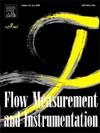Experimental evaluation of density meters using liquid CO2 and their effect on volumetric to mass flow conversion for CCS
IF 2.3
3区 工程技术
Q2 ENGINEERING, MECHANICAL
引用次数: 0
Abstract
CO2 capture and storage (CCS) is an important technology for reducing atmospheric CO2 emissions. Urgent climate targets require widespread implementation of CCS. CCS commands the deployment of measurement technology that enables accountability, process control, and reporting of the stored mass of CO2 to regulatory bodies. The metering needs through the CCS value chain encompass as a bare minimum mass flow rates and stream composition. Most CCS-suitable flow metering technologies measure volumetric flow rates; thus, density knowledge is needed for volumetric-to-gravimetric flow rate conversion. Mass flow measurement, or mass derived from combined volume and density measurements, is fundamental in all nodes where custody transfer occurs. In this work, three off-the-shelf density measurement technologies were tested. The technologies encompass a Coriolis meter, a Gamma-ray densitometer and a torsional resonator. Densities calculated using the Span-Wager equation of state were used as reference. To assess the capabilities of each technology, the experimental campaign encompasses a broad operation envelope relevant to CCS applications. The gamma-ray meter, calibrated in situ, presented the least deviation from the reference density. The Coriolis measurements were highly repetitive, suggesting that calibration with CO2 would improve the performance. Density measurements exhibited a high sensitivity to temperature; thus accurate reference temperature is required in the vicinity of the fiscal meters when deployed in the field.
求助全文
约1分钟内获得全文
求助全文
来源期刊

Flow Measurement and Instrumentation
工程技术-工程:机械
CiteScore
4.30
自引率
13.60%
发文量
123
审稿时长
6 months
期刊介绍:
Flow Measurement and Instrumentation is dedicated to disseminating the latest research results on all aspects of flow measurement, in both closed conduits and open channels. The design of flow measurement systems involves a wide variety of multidisciplinary activities including modelling the flow sensor, the fluid flow and the sensor/fluid interactions through the use of computation techniques; the development of advanced transducer systems and their associated signal processing and the laboratory and field assessment of the overall system under ideal and disturbed conditions.
FMI is the essential forum for critical information exchange, and contributions are particularly encouraged in the following areas of interest:
Modelling: the application of mathematical and computational modelling to the interaction of fluid dynamics with flowmeters, including flowmeter behaviour, improved flowmeter design and installation problems. Application of CAD/CAE techniques to flowmeter modelling are eligible.
Design and development: the detailed design of the flowmeter head and/or signal processing aspects of novel flowmeters. Emphasis is given to papers identifying new sensor configurations, multisensor flow measurement systems, non-intrusive flow metering techniques and the application of microelectronic techniques in smart or intelligent systems.
Calibration techniques: including descriptions of new or existing calibration facilities and techniques, calibration data from different flowmeter types, and calibration intercomparison data from different laboratories.
Installation effect data: dealing with the effects of non-ideal flow conditions on flowmeters. Papers combining a theoretical understanding of flowmeter behaviour with experimental work are particularly welcome.
 求助内容:
求助内容: 应助结果提醒方式:
应助结果提醒方式:


